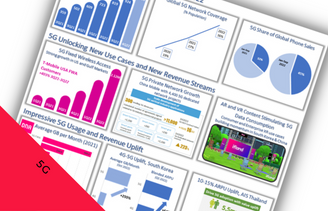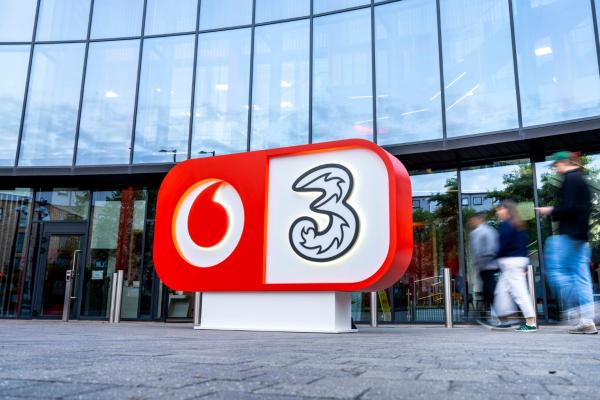Written by Philip Kendall, StrategyAnalytics.com

5G was a major contributor to improved operator performance in 2022 according to new figures. 5G users increased from 819 million in June to 924 million in September and will have passed one billion in the last 4-5 weeks. Momentum continues to build for 5G globally. 5G networks will cover 36% of the world’s population by the end of this month and 5G phones are closing in on accounting for half of all phones sold.
Strategy Analytics reviewed performance in the second half of 2022. Below are some of the highlights.
In China, there were 524 million 5G users in October, up 48% since the start of the year and accounting for 31% of all connections. As the leading market for 5G Standalone services, China has made strong progress in enterprise services: China Mobile recorded 223% revenue growth in 5G dedicated network revenue in H1 (with 4,400 projects), while China Unicom has increased its 5G (virtual) private networks from 2,014 in June to 3,416 in November.
In Hong Kong, HKT increased 5G’s share of its postpaid base from 20% in December 2021 to 28% this July, with it attributing the increase in mobile service revenue to 5G adoption and enterprise services, the 5G service plan uplift helping to offset intense price competition in price-conscious segments.
In South Korea, 5G accounted for 35% of all mobile connections in October and those connections accounted for 74% of mobile data traffic (up from 60% a year earlier). Strategy Analytics estimates 5G ARPU was 64% higher than 4G ARPU in Q3.
In Thailand, AIS has sustained the 10-15% ARPU uplift it has experienced from 5G and with 5.5 million 5G subscribers in September (over 12% of all subscribers) had already beaten its end-2022 targets.
In Finland, Elisa reported that the €3 per month average billing uplift it has experienced from 5G upgrades remained intact in Q3, with 5G now accounting for 33% of smartphones on its network (up from 20% at the start of the year).
In Portugal, 5G has increased from c. 4% of subscribers in March to 12% in September, with a 4x increase in 5G’s data traffic share over this period.
In Gulf States, Zain continues to lead on 5G, operating the region’s largest 5G network (Saudi Arabia) and claiming a world first with a Voice-over-5G launch (Kuwait). Zain Kuwait has increased its mobile service revenue share by over one percentage point over the last year.
In Brazil, 5G connections increased from 1.22 million (in 0.5% of all connections) in December 2021 to 2.89 million (1.1%) in June 2022 and 4.55 million (1.7%) in September.
In Chile, 5G connections increased from 32k (0.1% of active data connections) in December 2021 to 843k (3.7%) in June 2022 and 1.59 million (7.0%) in September. Entel had 1.08 million 5G customers this month, on the first anniversary of its launch, up from 738k in September: over one quarter of its data traffic is now carried on its 5G network.
In the United States, T-Mobile leads on 5G FWA (with over 2 million total FWA customers in September, the majority on 5G) though Verizon is now also making strong progress (over one million customers). FWA accounted for almost all broadband net adds in the US in Q3.
Strategy Analytics expects to see continued strong 5G progress globally in 2023. With Indian 5G services coming online in the last month, that market will provide an extra volume contribution to Asia-Pacific growth next year, while more operators in Latin America will follow the lead set by Brazil and Chile and scale up 5G services there. It is lining up to be an exciting year for 5G as that foundation of strong subscriber growth is supplemented with wider deployment of 5G Standalone services and the new advanced network service opportunities that these offer to operators for both vertical solutions and more advanced consumer applications.
Click here to read the original article









